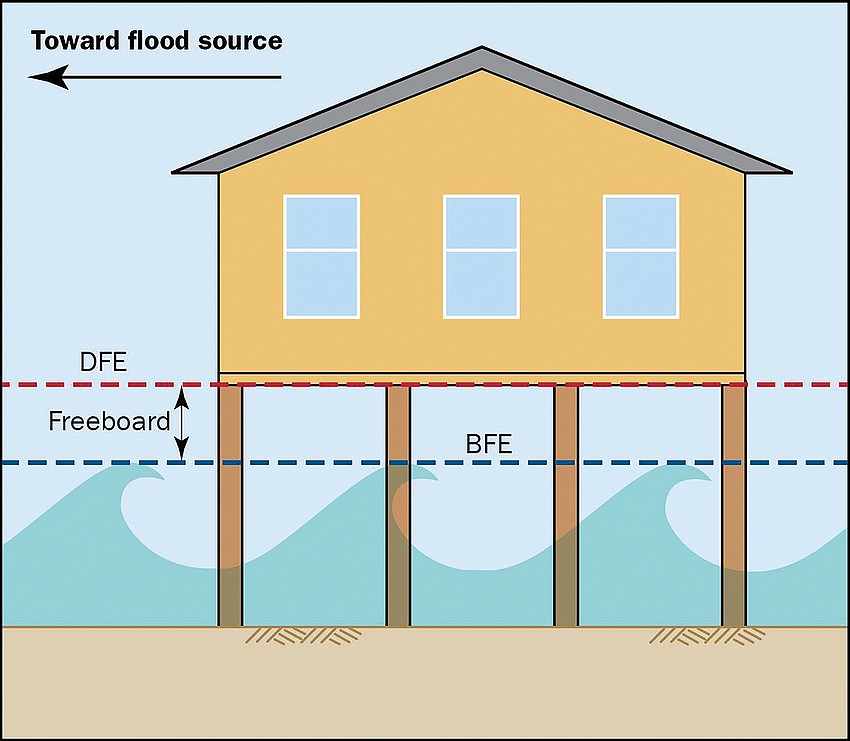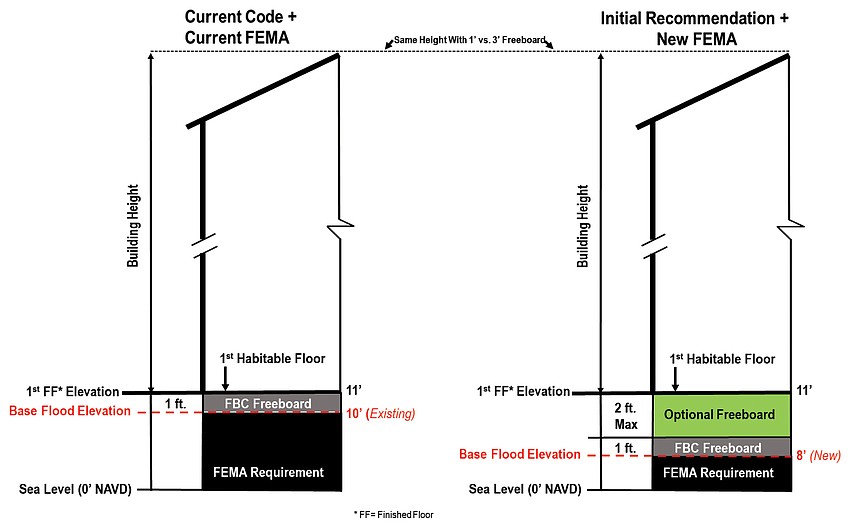- May 9, 2025
-
-
Loading

Loading
Maintain the status quo, or give property owners more flexibility when it comes to freeboard? That was one of the Longboat Key Town Commission’s main topics at the March 4 regular meeting.
After analyzing new base flood elevation maps put out by the Federal Emergency Management Agency, town staff with the Planning, Zoning and Building Department worked with Planning and Zoning Board members to draft an ordinance related to freeboard height.
Planning and Zoning Board members also pushed a little further than the original recommendation, according to Director of Planning, Zoning and Building Allen Parsons. The board’s recommendation to go beyond the status quo led to some discussion among town commissioners.
On March 4, Parsons presented to commissioners the proposal for allowing for an additional 2 feet of freeboard on top of the already-required foot of freeboard.
The new FEMA flood control maps for Sarasota County are still pending until March 27, but the maps enact a general decrease of about 2 feet for base flood elevation recommendations.
In January, town commissioners voted to adopt the maps when they become official on March 27.
FEMA regularly updates flood control maps. Manatee County’s maps were last updated in 2021. Parsons said the last Manatee County maps showed a similar decrease.
Base flood elevation (BFE) represents the level of surface water expected during a 100-year base flood event. It’s also described as a flood level that has a 1% chance of occurring in a given year.

“Older homes, like we have many out here in the town, are built below the base flood elevation,” Parsons said. “They are certainly at higher risk of flooding.”
Parsons added that structures built with habitable floors at or above the BFE are less likely to incur damage from major flooding events.
The decrease in BFE for an area like Longboat Key was striking for Parsons and other staff.
“I will fully acknowledge that this probably makes no common sense, … and so the question is, why has it gone down by 2 feet?” Parsons said.
According to FEMA, new advances in technology allowed for more accurate estimations, which contributed to the reduction in BFE recommendation.
The Florida Building Code also requires 1 foot of freeboard, a safety factor for floodplain management. Freeboard plus BFE equals what’s called design flood elevation, the elevation from sea level to the bottom of the first habitable floor.
After commissioners voted to adopt the maps back in January, the Planning and Zoning Board met in February to determine what the next steps would be in response to the new maps.
First, PZB staff and the board started with the recommendation to allow an optional 2 feet of additional freeboard on top of the already-required foot. Adding the optional 2 extra feet would allow houses to go back to status quo, as if the FEMA maps weren’t lowered.

But the Planning and Zoning Board, like Parsons said, wanted to do more. That’s what led them to the recommendation to allow for an optional 4 feet of freeboard, if the commission agreed.
David Green, chairman of the Planning and Zoning Board, said the board believed that the Town Commission should approve the 2 feet option at a minimum.
“We were surprised, shocked may be a better word, that the FEMA maps came back and actually lowered the standard,” Green told commissioners. “We wanted to enhance the resiliency of the island and create incentives for people to build more safe structures. … We felt like, as a consensus of the board, that we wanted to do more than just maintain the status quo.”
Commissioners heard from a couple members of the public before debating whether the additional 4 feet was the direction they wanted to take.
The idea was brought up that the commission could approve the 2-foot recommendation first and then look into adding the additional 2 feet before the ordinance’s second hearing on April 1.
Some commissioners suggested that the PZB department also explore the option to only allow the 4 feet in certain areas that have a lower BFE.
Commissioner-at-Large BJ Bishop was in favor of adopting the 4-foot option.
But most other commissioners were in agreement to stick with the 2-foot option for now and explore adding the additional 2 feet in select areas. That motion was moved and seconded, leading to a 5-1 vote, with Bishop being the only opposed.